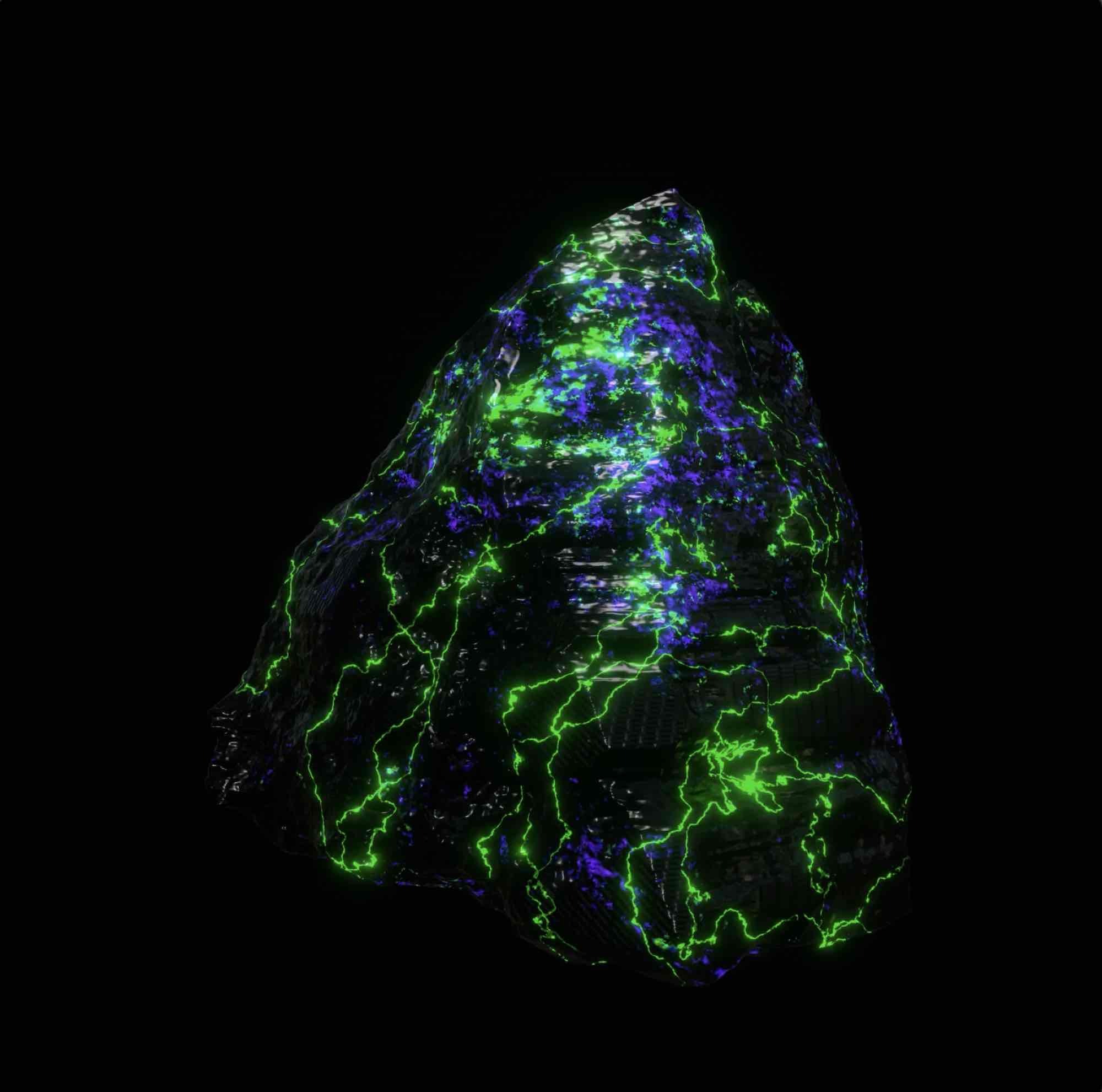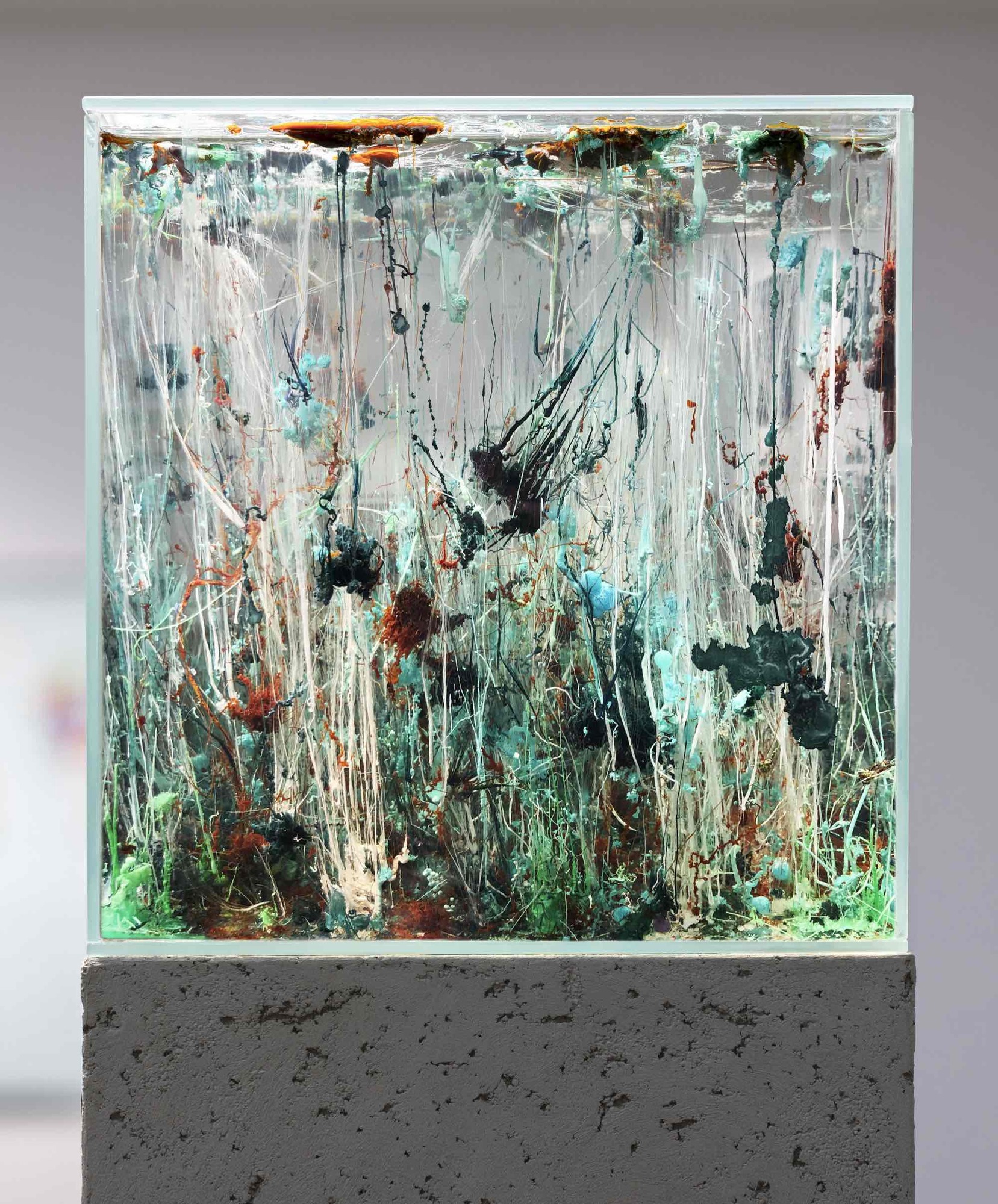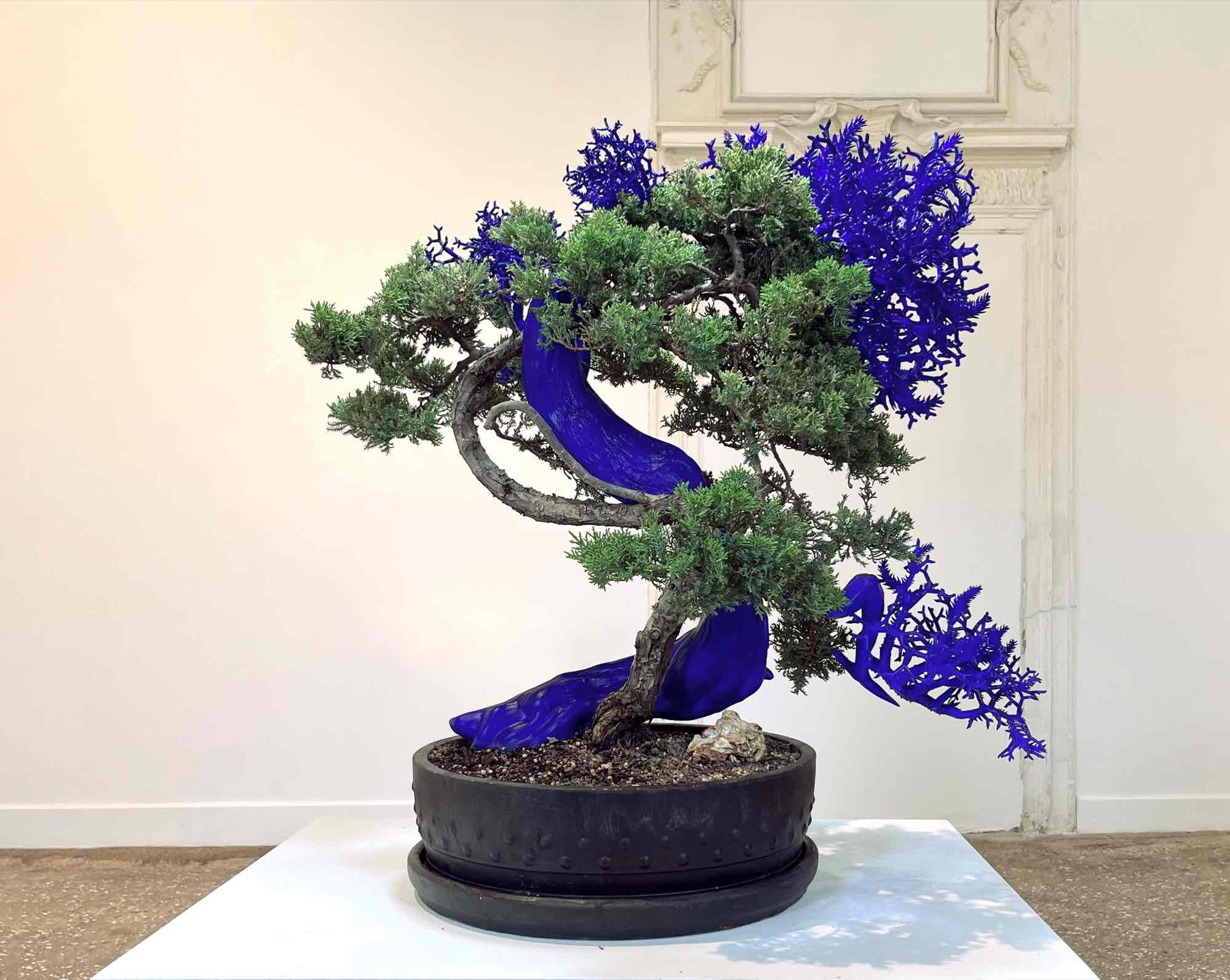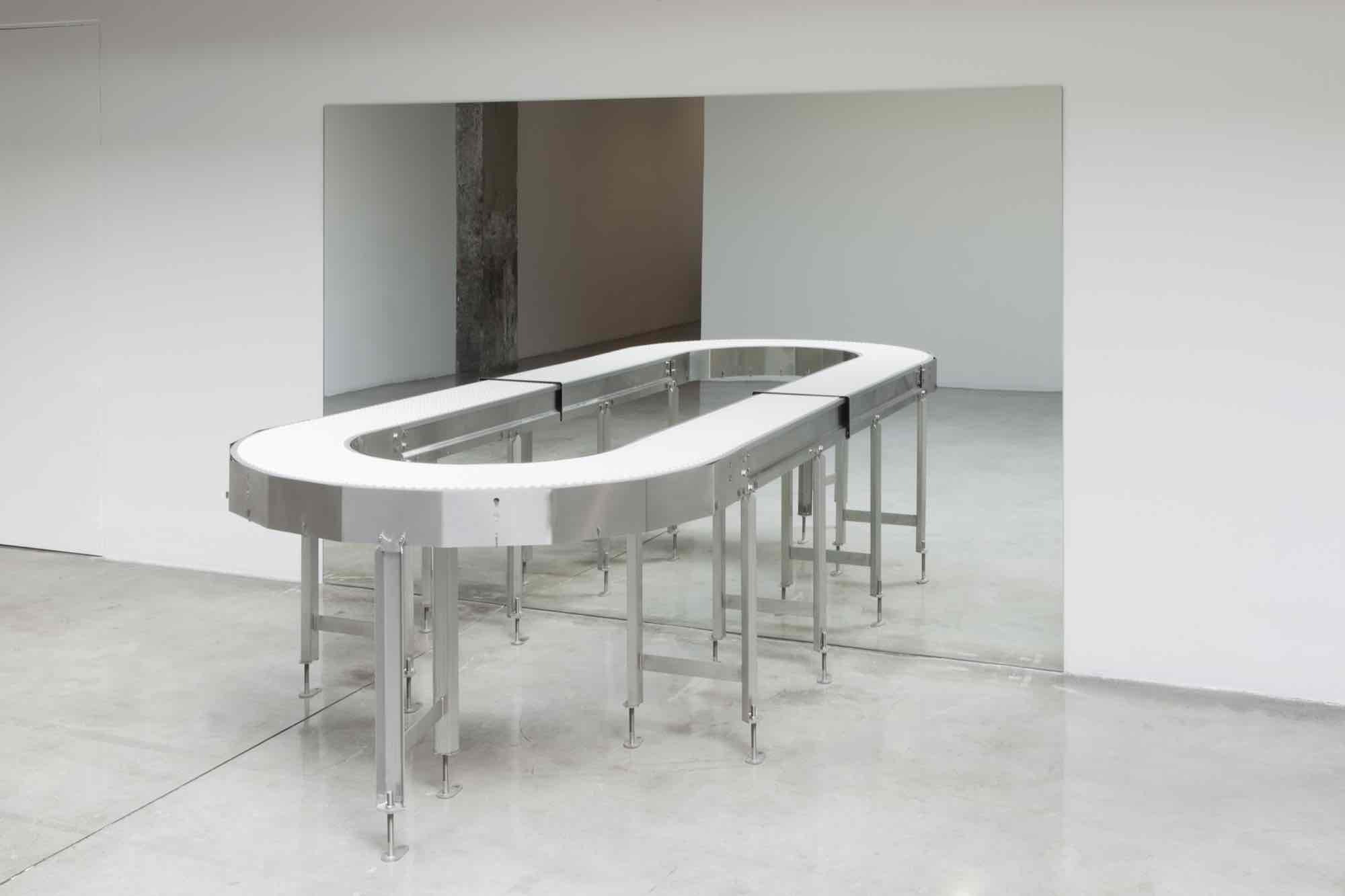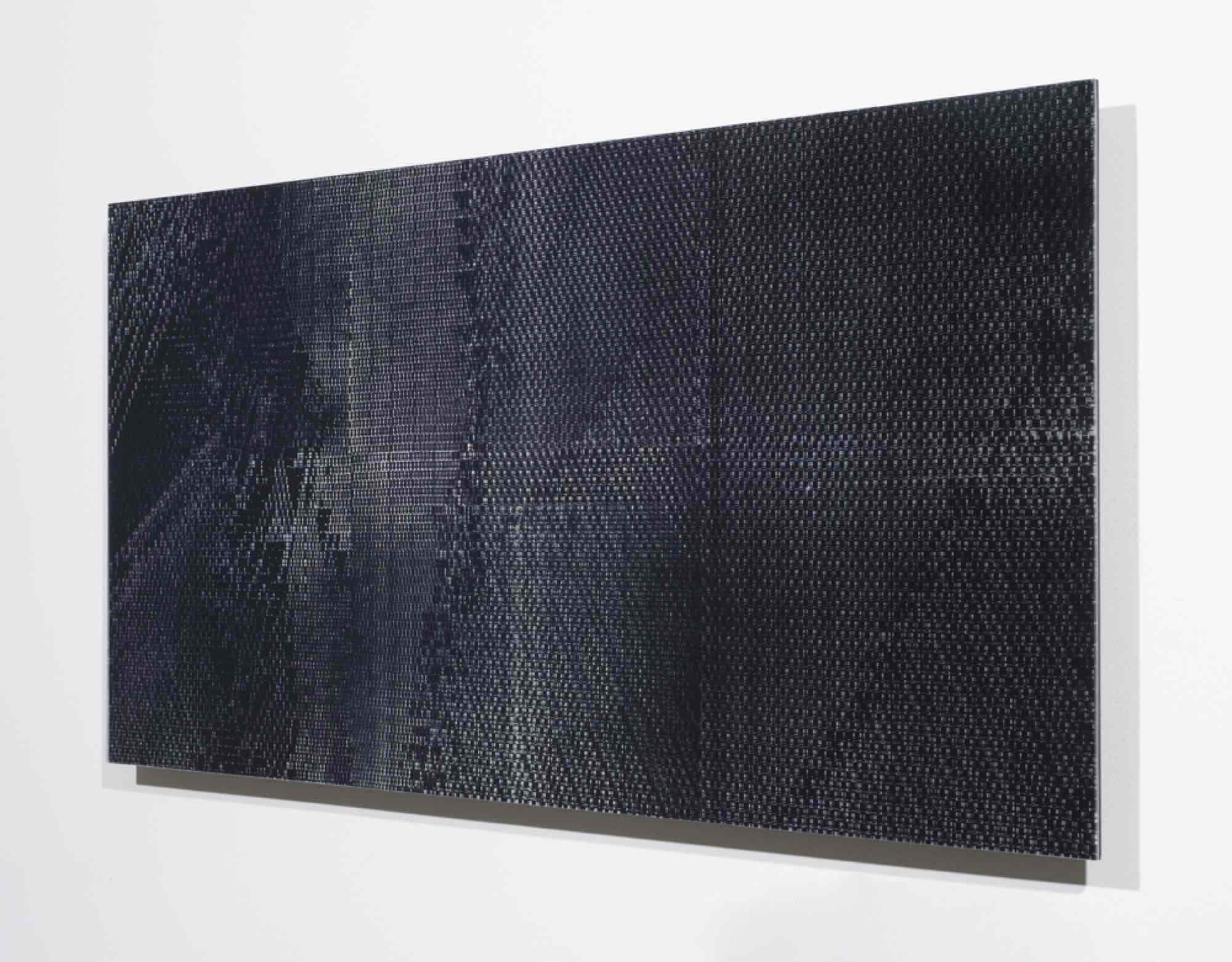Agnieszka Kurant
Uncomputables
14 May - 16 Jul 2023
Kunstverein Hannover presents artist Agnieszka Kurant’s (b. 1978, Poland) first institutional solo exhibition in Germany. The New York-based conceptual artist’s work investigates the phenomena of collective and nonhuman intelligences (ranging from bacteria and slime molds to artificial intelligence), the future of labor and creativity, and the extractivist economy of digital surveillance capitalism. Her current exhibition brings together a body of work—some of which has previously been shown at the Guggenheim Museum, New York; Castello di Rivoli, Turin; and Centre Pompidou, Paris—and new works that explore the impact of technology on transformations and concepts of plural subjectivity and collective agency.
Kurant’s works echo quasi-alchemical transmutations of energy and matter and, like living organisms, undergo perpetual evolution. The artist creates conditions in which unpredictable, unstable forms—assemblages and amalgamations—emerge or crystallize from complex systems of human and nonhuman agents: millions of molecules, microbes, termites, ghost workers, or protesters.
In Chemical Garden (2021–23), plant-like crystalline structures are nurtured from a mix of inorganic chemicals: metal salts that are the essential components of modern computers. Paradoxically, the modern industrial extraction of these elements, which once enabled the evolution of life on Earth, is wreaking havoc on natural ecosystems. At the same time, Kurant’s Conversions, her evolving liquid crystal paintings, form shifting, mesmerizing patterns that reflect the fluctuating emotions of members of various protest movements around the globe. Post-Fordite and Sentimentite explore hybrid, speculative geological forms of an anthropogenic nature. Semiotic Life (2022/23) finds a juniper bonsai tree entangled with a 3D-printed shape created as an algorithmic prediction of a future form that this tree species might take as optimal for its development—not a symbiosis, but a rather unfair race in which life inevitably overtakes the forecast.
With Alien Internet (2023), a shape-shifting superorganism created with ferrofluid—a substance invented by NASA in 1963—and digitally controlled in an electromagnetic field by data from thousands of animals worldwide, the artist imagines a future collective nonhuman lifeform. Meanwhile, the ever-moving steel conveyor belt Untitled (2014), which dissolves into its own reflection, also mirrors the infinite feedback loop of automation, energy circulation, and immaterial labor.
The science-assisted economy approaches every future scenario as a possibility: a sequence of events that can be configured, quantified, and thus calculated, and quickly discards the results that do not conform to the vision of unidirectional progress. Agnieszka Kurant considers energy to be the key currency. Following its transformations, she explores the wildcard storylines and outdated visions of necro-futures—former fictional and utopian leaps that quickly became steep jumps into neoliberal pitfalls. All prove uncomputable.
Kurant’s works echo quasi-alchemical transmutations of energy and matter and, like living organisms, undergo perpetual evolution. The artist creates conditions in which unpredictable, unstable forms—assemblages and amalgamations—emerge or crystallize from complex systems of human and nonhuman agents: millions of molecules, microbes, termites, ghost workers, or protesters.
In Chemical Garden (2021–23), plant-like crystalline structures are nurtured from a mix of inorganic chemicals: metal salts that are the essential components of modern computers. Paradoxically, the modern industrial extraction of these elements, which once enabled the evolution of life on Earth, is wreaking havoc on natural ecosystems. At the same time, Kurant’s Conversions, her evolving liquid crystal paintings, form shifting, mesmerizing patterns that reflect the fluctuating emotions of members of various protest movements around the globe. Post-Fordite and Sentimentite explore hybrid, speculative geological forms of an anthropogenic nature. Semiotic Life (2022/23) finds a juniper bonsai tree entangled with a 3D-printed shape created as an algorithmic prediction of a future form that this tree species might take as optimal for its development—not a symbiosis, but a rather unfair race in which life inevitably overtakes the forecast.
With Alien Internet (2023), a shape-shifting superorganism created with ferrofluid—a substance invented by NASA in 1963—and digitally controlled in an electromagnetic field by data from thousands of animals worldwide, the artist imagines a future collective nonhuman lifeform. Meanwhile, the ever-moving steel conveyor belt Untitled (2014), which dissolves into its own reflection, also mirrors the infinite feedback loop of automation, energy circulation, and immaterial labor.
The science-assisted economy approaches every future scenario as a possibility: a sequence of events that can be configured, quantified, and thus calculated, and quickly discards the results that do not conform to the vision of unidirectional progress. Agnieszka Kurant considers energy to be the key currency. Following its transformations, she explores the wildcard storylines and outdated visions of necro-futures—former fictional and utopian leaps that quickly became steep jumps into neoliberal pitfalls. All prove uncomputable.


